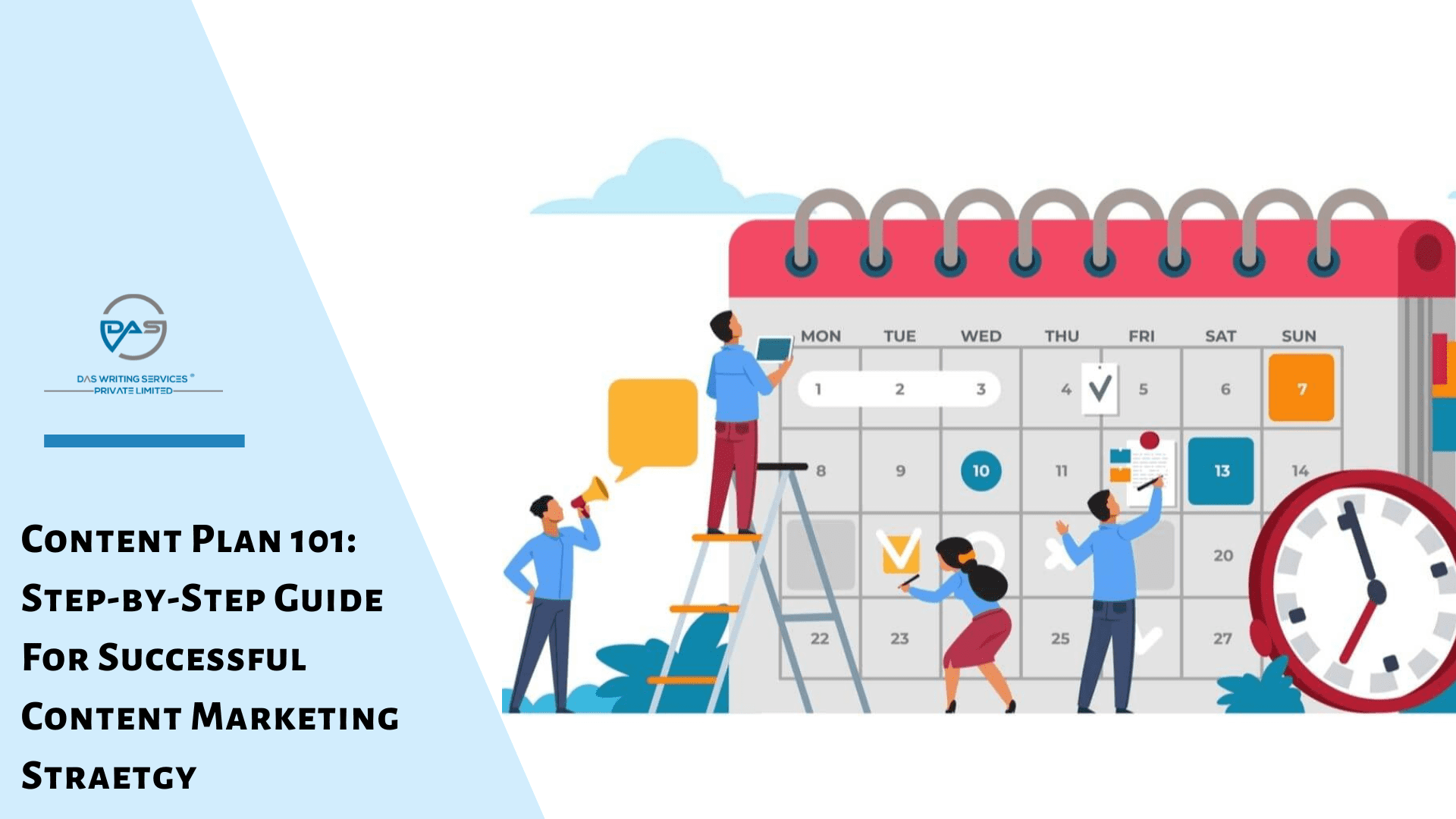Today, the world moves around digital content. With increasing familiarity with the internet, different type of content are attracting 3x more users, giving the content economy a considerable boost in the Indian market.
This phenomenon creates opportunities for brands to build their presence online and stand out in the overall field of competition. As a brand, you can leverage the popularity of content to satisfy the audience’s curiosity and entertainment needs while fulfilling your marketing goals.
So, check out this blog for content creators to get a complete idea for creating impactful high-quality content.
What is Digital Content for a Business?
Any type of content on the internet, be it newsletters, blogs, articles, videos, podcasts, white papers, that can inform and engage a particular audience demography is a type of digital content. The media content, whether it is entertaining or informational, allow a business to engage with potential audience and inform them about the value propositions of the business venture.
Want to get high quality digital content for your business? Reach out to us!
Why is Digital Content Creation So Important for a Business?
In short, creating content helps businesses reach and interact with target audiences and convert them into long-term customers. For instance, LinkedIn serves as a vital platform for enterprises to engage with their potential customers and foster a loyal partnership.
Nowadays, an increasing number of people expect quality content from the business they support. So, a business that wants to up its digital marketing game, should invest in digital content creation. It is that powerful tool that guides the user through the different stages of the conversion funnel to make them a valuable client.
Producing different types of digital content helps you enjoy the following advantages for your organisation:
1. Generate Brand Awareness for New Audience
Brand awareness has several levels. It can be a simple encounter with the brand’s product and/or services, or it can be having a thorough knowledge of the brand and nurturing a special value for the brand name.
As a new brand, sharing helpful, relatable content is the key to increasing visibility and acquire new customers. As consumers become more aware of the brand they will search more about it on Google.
Long story short, it is a crucial first step to letting your audiences know what you are about. And there is nothing like digital content that can help you with that.
2. Generate Hot Leads Organically
For any B2B business lead generation is a key factor for growth. A thorough lead generation strategy includes a myriad of methods to get the job done.
For example, you can seed attractive CTAs through the pages to attract users to your landing pages. Success is guaranteed when you have an effective navigation strategy for the users.
A solid email marketing strategy can complement your on-page content to generate effective leads. Here, along with the necessary tools, keeping the creativity of your emails up is a must to grab the attention of prospective clients and convert those leads.
Apart from these two, you should also use strategies like web page optimisation, sales engagement outreach, Google ads, social media marketing, content marketing, cold outreach, etc. to cover all ground.
3. Optimizes Conversion Rate
If one follows successful companies and the ones who are striving to make a name for themselves, both publish new content pretty frequently. They may have separate goals in mind, but to ensure conversion digital content has a major role to play.
With each new content, a successful brand gets more and more visitors which ultimately drives their overall business growth. Whereas, a new business gets new customers through powerful digital content equipped with compelling CTAs.
With quality content and consistency, you can surely increase your conversion rate. Furthermore, optimising the website with strategic placement of lead capture forms with enough trust signals helps to acquire new users.
4. Fosters Customer Loyalty
How?
The simple answer is a customer stays most engaged with a brand immediately after purchase. If you are unable to meet the needs of that customer, you fail to convert that first sale into a long-term client.
So, to ensure the long-term success of the business you have to keep conversion rate optimisation (CRO) in mind.
Alongside that, a business can invest time and energy into simple and effective content optimisation for outdated content to keep it fresh and relevant for new audience.
Now, with the best business practices you will start to build a customer base.
What are the Types of Digital Content You Must Use?
As we got to know that a lot goes into fulfilling a business’ primary goals, it would be helpful to know the types of digital content that work the best.
If you run a Google search “types of digital content” you will find articles citing more than 100 types of them that include memes, chrome extensions, software, book summaries, and so on. However, only a handful is relevant for a business.
So, here we list the most ROI-efficient content types to receive quantifiable results for your business:
1. Blogging
Blogs are a great idea for businesses to reach the target audience and make them life-long customers. Generally, a group of professional content writers who have a deep knowledge of the business and their services create blogs.
Let’s take a look at the benefits of blogging for business:
- It helps drive traffic to your website.
- It plays a significant role in converting traffic into leads.
- Blogs help a business with link building.
- It keeps you connected to the market at all times.
- Blogs can express your genuine grasp of a subject and establish authority.
- It distinguishes a business from its competitors.
So, considering investing in website blogs would be a smart move guaranteed to bring concrete results.
2. Videos
Marketers are using video content more rapidly than ever, which is evident from the current rise of Reels, Livestreams, and Webinars across various digital platforms including YouTube, Instagram, Facebook, and so on.
Video marketing has become a new strategy for businesses because:
- Videos boost conversion at a rapid rate.
- Google loves video content.
- Mobile users like to watch videos.
- The format is easy to explain your product and services.
- The video format is super easy to consume.
- This format provides considerable ROI.
A business should think about how to use video content for its marketing purposes, not only because everyone is doing it, but to use its versatility.
3. Infographics
It is a fact that we humans are visual learners. As images appeal to us better than written or spoken words, businesses use them to the best of their abilities. They use infographics to share information in a concise way that is aesthetically pleasing.
Let’s look at how infographics help a business:
- Infographics increase your content’s exposure.
- They improve decision-making by speeding up information processing.
- They increase information shareability by leaps and bounds.
- Infographics help build high-quality backlinks
- They make it easy to track results.
- They directly contribute to improving your ROI.
An extensive strategy for content marketing should always incorporate the use of infographics as it contributes to so many levels in useful ways.
4. Podcasts
The emergence of podcasts is recent and it has caught the market like wildfire (with 464.7 million listeners worldwide). It is now one of the most efficacious ways to reach your target audience, build a brand, and so on.
So, how does a podcast make businesses reach their goals?
- The barrier of entry is low, and it is very easy to make.
- It helps businesses reach audiences who are actively seeking out content.
- Podcasts can help you establish yourself as an authority in the industry.
- In the industry, you can establish yourself as a thought leader through your podcast.
- Podcasts are high-impact marketing tools that have minimum costs attached.
- It provides an opportunity to collaborate and network with various businesses and entrepreneurs.
You only need to have a topic that you are passionate about, and some basic equipment; and you are ready to share your knowledge with the world.
5. Original Research
Legacy, novelty, and value are original research domains that others can hardly build up to. If a business wants to cater to the audience’s curiosity to learn new things or provide new evidence to help them make a better decision, this is the way.
Original research would be beneficial for a business as:
- People tend to be fascinated by new information or insight.
- This unique offering will establish you as a thought leader in the industry.
- You will be able to provide data that will have a quantifiable value for a reader.
- Empirical data is comparatively more trustworthy than other sources of information.
- Depending on the nature of the research, the value can last a long time.
- It will continue to make the readers engage with the content.
To see long-term benefits with original research, you need to preserve the value and novelty of it. If you do that, you would be able to cut costs and still reap excellent rewards.
How to Create Digital Content Strategy?
If we boil it down to the basics, any type of digital content production process has three phases:
1. Research and Planning
Research and planning is necessary to generate ideas.
You can start by researching your audience. Use questions like Who is your target audience? What do they want? And finally, how can you help fulfil that through your content?
You can use Semrush’s market analysis tools to conduct the research too. You can even use their tools to generate topic ideas (if you would like to brainstorm or you are starting from scratch).
While conducting topic research, you will be able to discover broad content ideas and subtopics to work on.
The next step will be keyword research. It is best to use Semrush’s Keyword Magic Tool that you can rely on. However, it is up to you to decide (based on your specific circumstances) how you would use the “search volume” and “keyword difficulty” results.
Look for keywords of your choice, and keep them for the next phase.
2. Content Development
Before going to the development part, it applies to every piece of content that you develop; you should consider your audience. Make sure that it answers a question that your audience has. Or, it should provide a genuine solution to their problem.
Now, with topics on your hand, you have to categorise them and assign a content format for each. It will depend on the goal of the content.
For example, you would use a how-to video or a blog post if you want to raise brand awareness. You would use a research study or compose an ebook if you want to generate leads.
After you have created specific content ideas, generating a content plan would be ideal. It will help you map out requirements for your content development and how you would complete the tasks.
A content plan must include a brief for every topic you have chosen. The brief would contain details such as “the reason to create this content”, “who is responsible to create this (assigned creator/external agency)”, “internal linking opportunities”, “editing details”, etc.
Whatever the format is, you must ensure that the goal of the content is clear.
3. Measurement of Performance
Is it odd that the creative process does not end even after the content is published?
No.
One needs to make sure that the published content is giving you the results that you wanted. You would do that by figuring out room for improvements and making corrections accordingly.
To ensure data-driven decision making, track the progress of your site’s content in Google Analytics. The performance of your content is dynamic and it is always based on content-specific goals. So, do not forget to measure your content according to the intent of it.
You can also connect Google Search Console accounts and Google Analytics to get a comprehensive idea of your foothold alongside the competitor data.
All that remains in the content generation process is the refinement of the content based on the feedback.
Takeaway
For a business there is no debate of whether to use digital content or not, but how they are going to use it. With the above guidelines, a new business should be able to set up its own strategy and move farther towards an increased ROI over time.
Frequently Asked Questions
1. What makes good digital content?
Good content should answer queries, provide solutions to problems, offer help with products or services, make aware of the bard, add credibility to the business, etc.
2. What are the 5 Cs of digital media?
The 5 Cs of digital media are Content, Community, Conversation, Collaboration, and Conversion.
3. What are the 7 Ds of digital marketing?
Discover, define, design, develop, deliver, distribute, and determine. These are the 7 Ds that are set up to help a business bring effective and successful products to the market.

Ritish Dutta is a seasoned Content Developer with over 7 years of experience in the industry. Currently, at Das Writing Services, he writes SEO-optimized content that caters to our diverse clientele. Ritish utilizes his critical insights and experience to talk about digital marketing, SEO content writing, content strategy, and AI.





Leave a comment